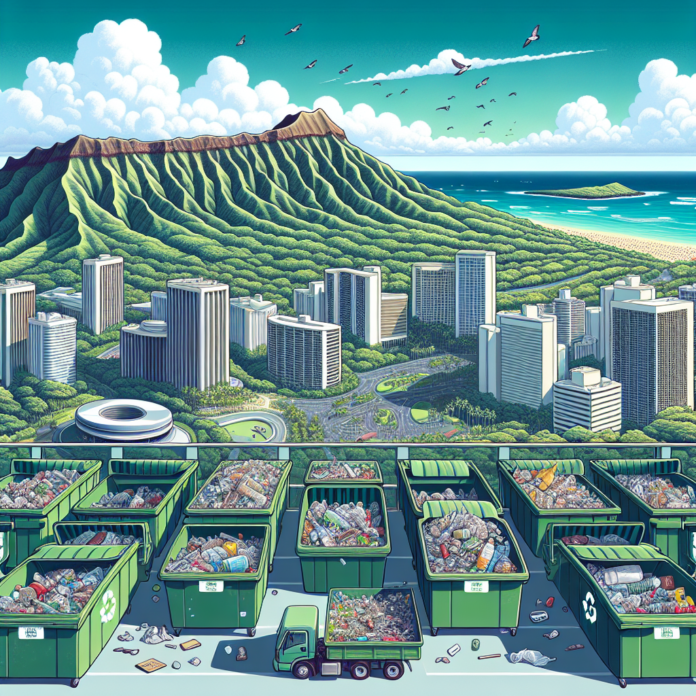Honolulu’s Landfill Challenge and a Potential Solution
Honolulu Faces a Growing Landfill Challenge: Exploring Potential Solutions
Honolulu is grappling with a significant landfill issue that threatens the island’s environment and public health. As the population increases and waste generation rises, the city’s landfill capacity is quickly diminishing. This situation calls for urgent action and innovative solutions to manage waste more effectively.
The Current Landfill Situation
Honolulu’s primary landfill, the Waimanalo Gulch Sanitary Landfill, is nearing its capacity, with projections indicating it could be full within the next few years. The rapid growth of the city, combined with a lack of recycling and composting infrastructure, has led to an unsustainable waste management system. As a result, the community is facing not only environmental degradation but also potential legal and regulatory challenges.
Environmental Impact
The repercussions of the landfill crisis extend beyond mere space shortages. Landfills contribute to greenhouse gas emissions, which exacerbate climate change. Additionally, leachate from landfills can contaminate local water sources, posing risks to both human health and marine ecosystems. The pristine beaches and vibrant coral reefs that draw millions of tourists to Hawaii are under threat from improper waste management.
Innovative Solutions on the Horizon
To combat the landfill crisis, Honolulu must explore a variety of innovative waste management strategies. One promising solution is the implementation of enhanced recycling programs. By investing in education and infrastructure for recycling, the city could significantly reduce the amount of waste sent to landfills. Programs that encourage the separation of organic waste for composting could also divert a substantial portion of refuse from landfills.
Another approach involves exploring waste-to-energy technologies. These systems convert waste materials into usable energy, thereby reducing the volume of waste while generating power. While some community concerns exist regarding emissions from waste-to-energy facilities, advancements in technology have made these systems cleaner and more efficient.
Community Engagement and Education
Engaging the community is crucial for the success of any waste management initiative. Public education campaigns can raise awareness about the importance of recycling, composting, and reducing waste. By fostering a culture of sustainability, residents can play an integral role in alleviating the pressure on landfills.
Partnerships with local organizations and businesses can also amplify these efforts. For instance, collaborations with schools can instill environmentally friendly practices in the younger generation, ensuring a long-term commitment to waste reduction.
Policy Changes and Government Support
For Honolulu to effectively tackle its landfill problem, supportive policies at the municipal level are essential. This includes investing in waste management infrastructure, such as recycling centers and composting facilities, as well as providing incentives for businesses to adopt sustainable practices. Implementing stricter regulations on waste disposal can also encourage individuals and companies to minimize waste generation.
A Path Forward
The landfill crisis in Honolulu is a pressing issue that requires immediate attention and action. By exploring a combination of enhanced recycling, waste-to-energy technologies, community engagement, and supportive policies, the city can develop a sustainable waste management strategy. These efforts will not only help preserve the environment but also ensure a healthier, cleaner future for the residents of Honolulu and the millions of visitors who cherish its natural beauty.
In conclusion, addressing the landfill problem is not just about managing waste; it is about safeguarding the future of Honolulu. A collaborative approach that includes government, businesses, and the community can create a resilient system that prioritizes sustainability and environmental health.


